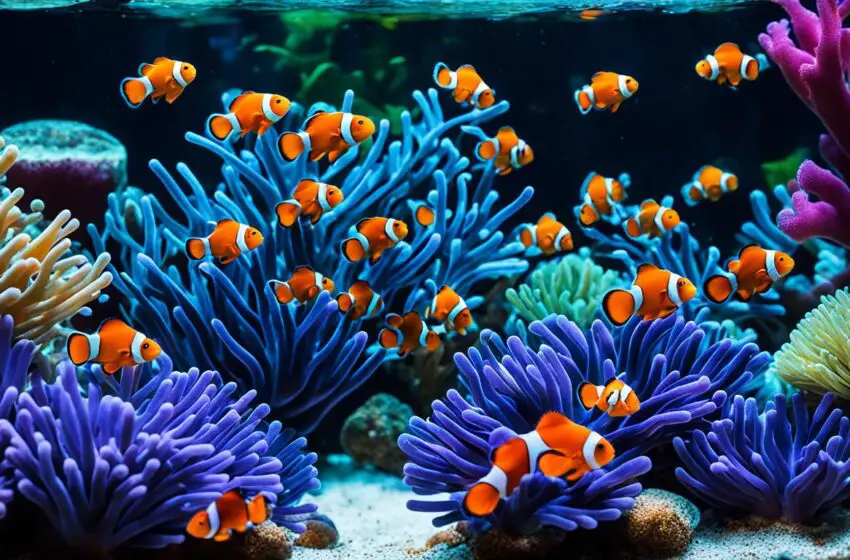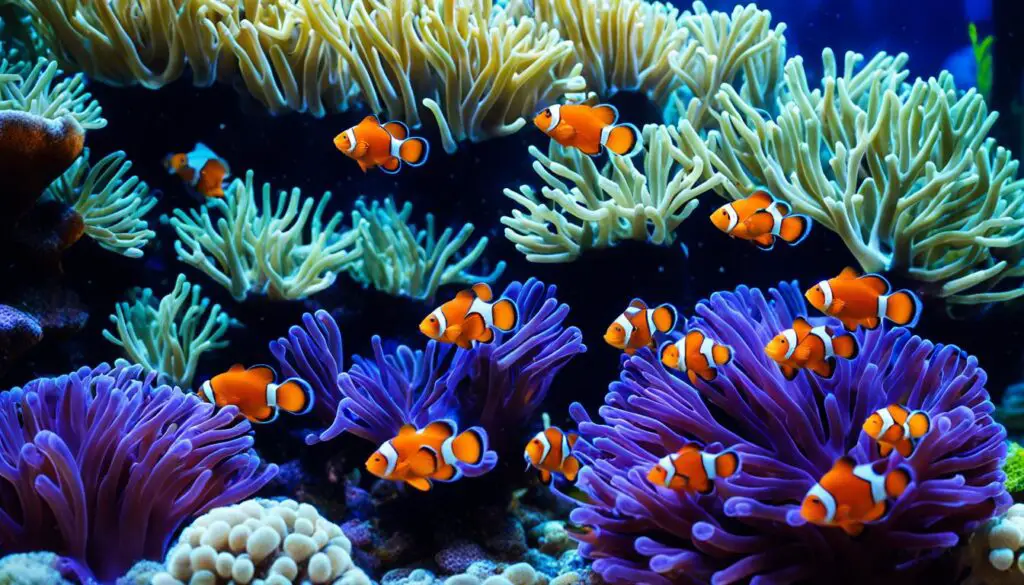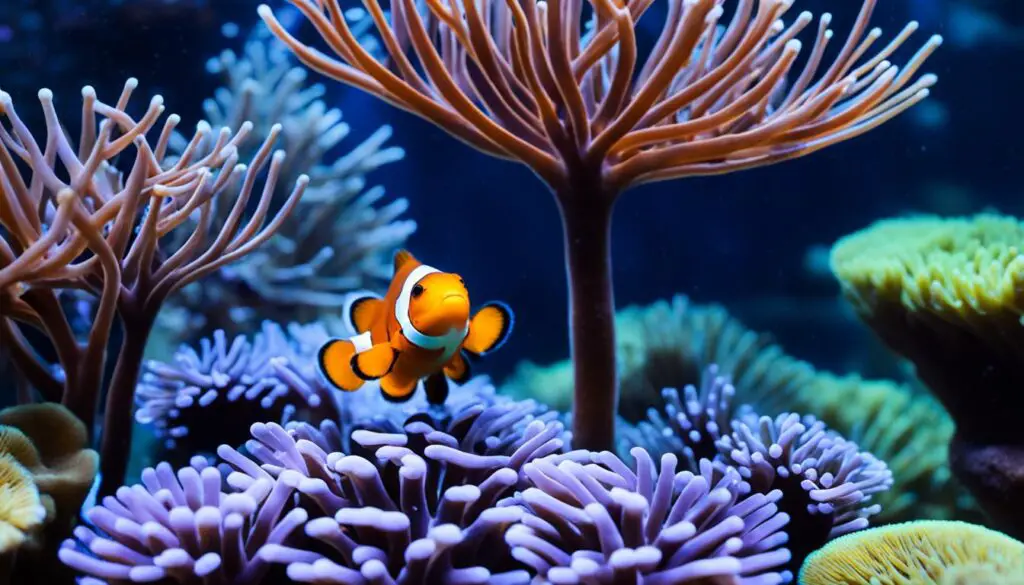Clownfish Tank Conservation Initiatives: Join the Movement

Welcome to the exciting world of clownfish tank conservation! In this article, we dive into the efforts to save these amazing fish and where they live. We’ll look at their biology, the dangers they face, and how we can help.
Clownfish, like the Amphiprion ocellaris type, live in special places all over. They’re from the Andaman Sea down to Australia, through Indonesia and the Philippines, to southwest Japan. They like it in shallow, hidden spots around reefs. Their bright orange bodies with white and black stripes are really eye-catching!
These fish eat zooplankton and have a special way of having babies. They can change their gender! This helps them live together with certain sea anemones, where they lay their eggs. They are also quite protective of their homes.
But, people are causing problems for clownfish. They get taken too much for the pet trade, and their homes are being damaged. This puts them in danger. Fortunately, steps are being taken to protect them. There are rules about how many can be caught and efforts to breed them in safety. This is all to make sure they are around for a long time.
Key Takeaways:
- Clownfish have a special bond with certain sea anemones.
- They come from parts of the world like the Andaman Sea to Northwest Australia and more.
- Clownfish eat zooplankton and have unique ways of having babies.
- Conservation work focuses on controlling their collection and breeding them in captivity.
- Too much collecting and damaging their homes are big problems for clownfish.
The Story of Saving Nemo
Saving Nemo is a not-for-profit that started in 2005. It was started by people who love science and the sea. Their goal is to save clownfish and their homes. They work hard to make sure less wild fish are caught for aquariums.
Saving Nemo doesn’t work alone. They team up with others who care about saving the oceans. Together, they push for a special seal that says a fish was born in a safe place. This seal helps people know which fish to buy to protect the ones in the wild.
Money to help Saving Nemo comes from many places. Some comes from selling captive-bred fish. Others help out with money and special projects. All this cash helps breed more fish in a safe way and teaches others how to do it too.
Every year, a lot of clownfish are taken from their homes. This hurts their numbers in the wild. Saving Nemo works hard to stop this by making sure more people pick fish that were born safely. They want everyone to know why it’s important.

Saving Nemo is all about making sure clownfish keep swimming in the sea. They believe in doing things that don’t hurt the ocean. If we help by choosing the right fish to buy, we can do a lot to protect the sea and all its animals.
Conclusion
The movie Finding Nemo made many people want to own clownfish as pets. This caused too many to be taken from the sea. Yet, we can help by taking certain actions.
Breeding clownfish in safe places is a good idea. It means we don’t have to take them from the ocean. Saving Nemo is one group that’s helping by doing this. They also research and teach people about these fish.
We can also do our part. Choosing clownfish that are grown without harming the environment is a good step. We should also keep our tanks in ways that don’t hurt the ocean. And it’s important to share the word on why protecting them matters.
By working together, we can make big changes. It’s about more than just these fish. It’s about keeping our oceans healthy and full of life. And everyone can help with that.
So, let’s support this cause and act for the future of clownfish. Our efforts now can really make a difference for them and their homes.
FAQ
What is the Hawk Conservancy Trust?
The Hawk Conservancy Trust is a worldwide group. It works to save and learn about birds of prey.
Where are clownfish native to?
Clownfish live from the Andaman Sea to Northwestern Australia. They are also found in central Indonesia, the Philippines, and southwest Japan.
What do clownfish eat?
Clownfish mainly eat zooplankton. They are carnivorous omnivores, which means they eat both meat and plants.
Do clownfish have unique reproductive behaviors?
Yes, they are special. Clownfish can change genders and their eggs stick to surfaces where they live.
What threats do clownfish face?
Clownfish are in danger. The main threats are too many being caught for fish tanks and the loss of their home in coral reefs.
Who is Saving Nemo?
Saving Nemo is a non-profit. It was started by teachers and scientists at Flinders University. They work with fish farming and sea life.
How does Saving Nemo combat the demand for wild-caught clownfish?
Since 2005, Saving Nemo has been raising clownfish. By doing this, they help cut down on catching them in the wild for tanks.
How does Saving Nemo fund its initiatives?
They get money from selling clownfish. They also get help from friends, grants, and donations.
What is the mission of Saving Nemo?
Saving Nemo wants to save clownfish. They do this by breeding them safely, studying them, and teaching others how to care for them.
Why is clownfish breeding in captivity important?
Keeping clownfish alive is the big goal of captive breeding. It stops them from disappearing. This also means people don’t have to catch them from the wild.
How can consumers support the conservation of clownfish?
Buy fish that are certified as safe for the environment. Treat your fish tank in a way that is good for nature. Tell others about why saving clownfish is so important.



